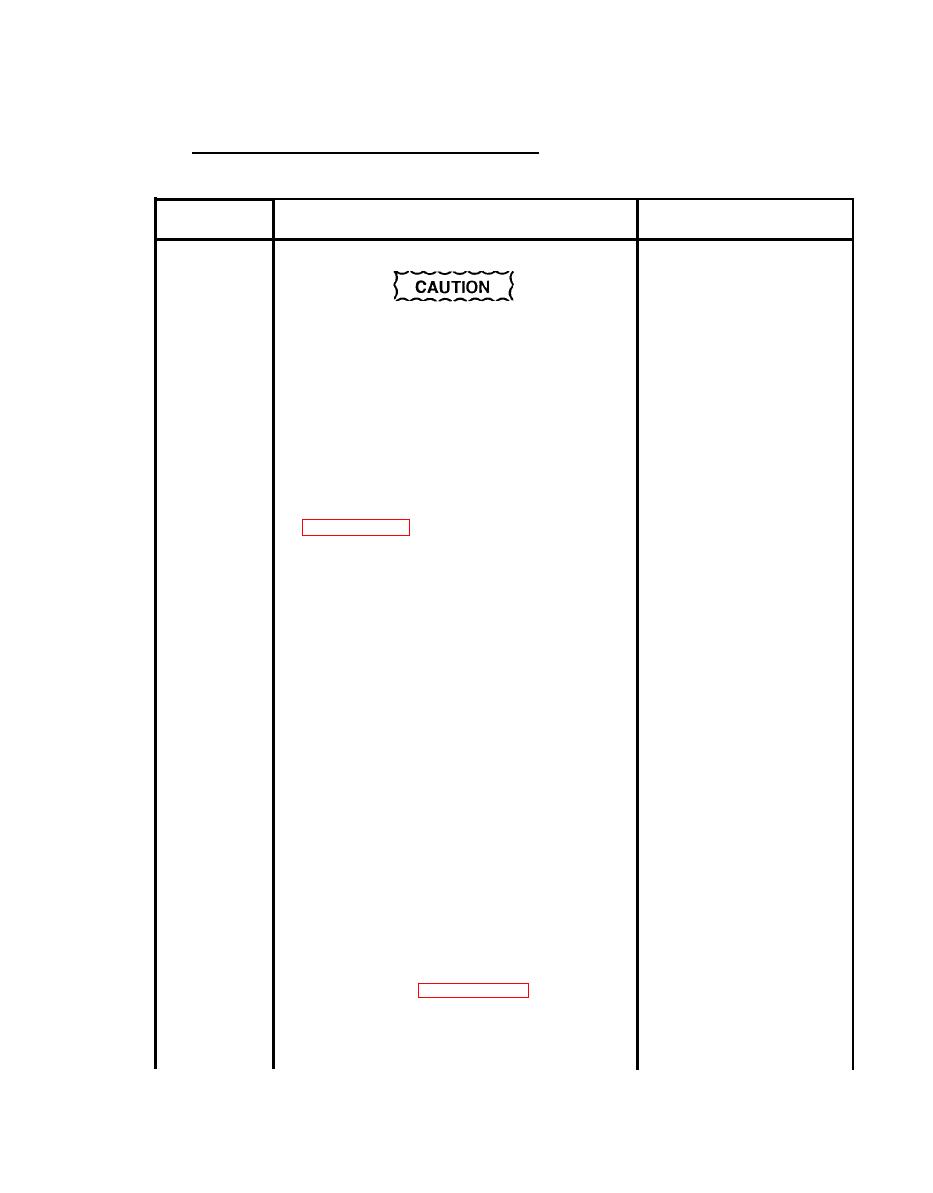
TM 9-4120-378-14
REFRIGERATION SYSTEM SERVICING-(PURGING) .- Continued
5.5
Location/Item
Action
Remarks
Nitrogen is an inert gas. However, it
also presents danger as a suffocant
and therefore, must also be dis-
charged in a ventilated location.
Assuming that the system has been discharged using
a manifold as described in paragraph 5-4, proceed as
follows:
a.
See specific component removal/repair instruc-
tions.
Be sure that refrigerant has been discharged (see
b.
Connect the center hose from the charging man-
c.
ifold to a nitrogen regulator and dry nitrogen tank.
The hose from the high pressure service valve to
d.
the charging manifold must be connected.
The hose from the low pressure service valve must
e.
be disconnected from the charging manifold.
Open both service valves on the unit.
f.
Close the unused valve on the charging manifold
g
and open the one with the nitrogen tank hooked up.
h.
Open the nitrogen cylinder valve and adjust the
regulator so that less than 1 -2 cfm (0.028-0.057
m3/minute) of nitrogen flows through system.
i.
Check discharge from hose attached to the low
pressure service valve to be sure that no oil is being
forced out of the system.
j.
Allow nitrogen to sweep through the system
at the rate of less than 1 -2 cfm (0.028-0.057 m3/
minute) for a minimum of 5 minutes, before starting
any brazing operation. Then allow it to continue to
flow at the same rate until all brazing operations are
completed. (See paragraph 5.6 for brazing/de-
brazing procedures.)
k.
After installation brazirng operations are completed,
allow nitrogen to flow for a minimum of 5 minutes.
5-13

